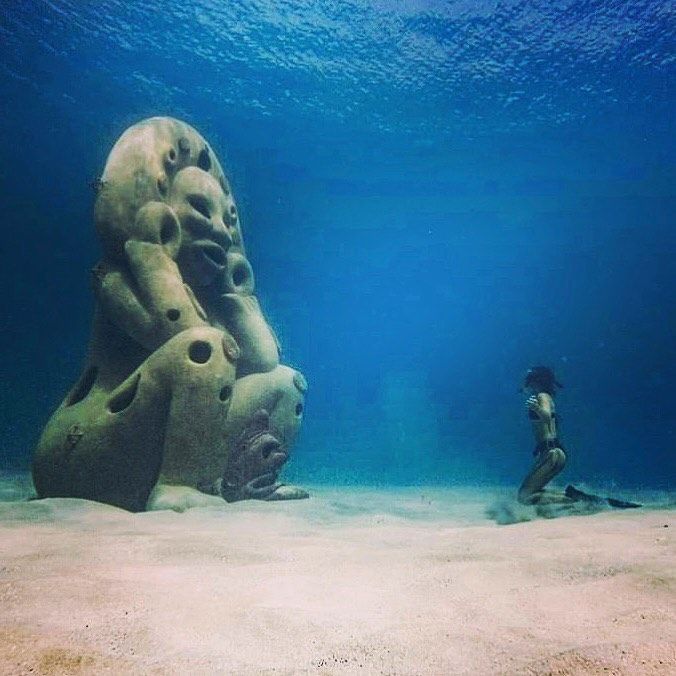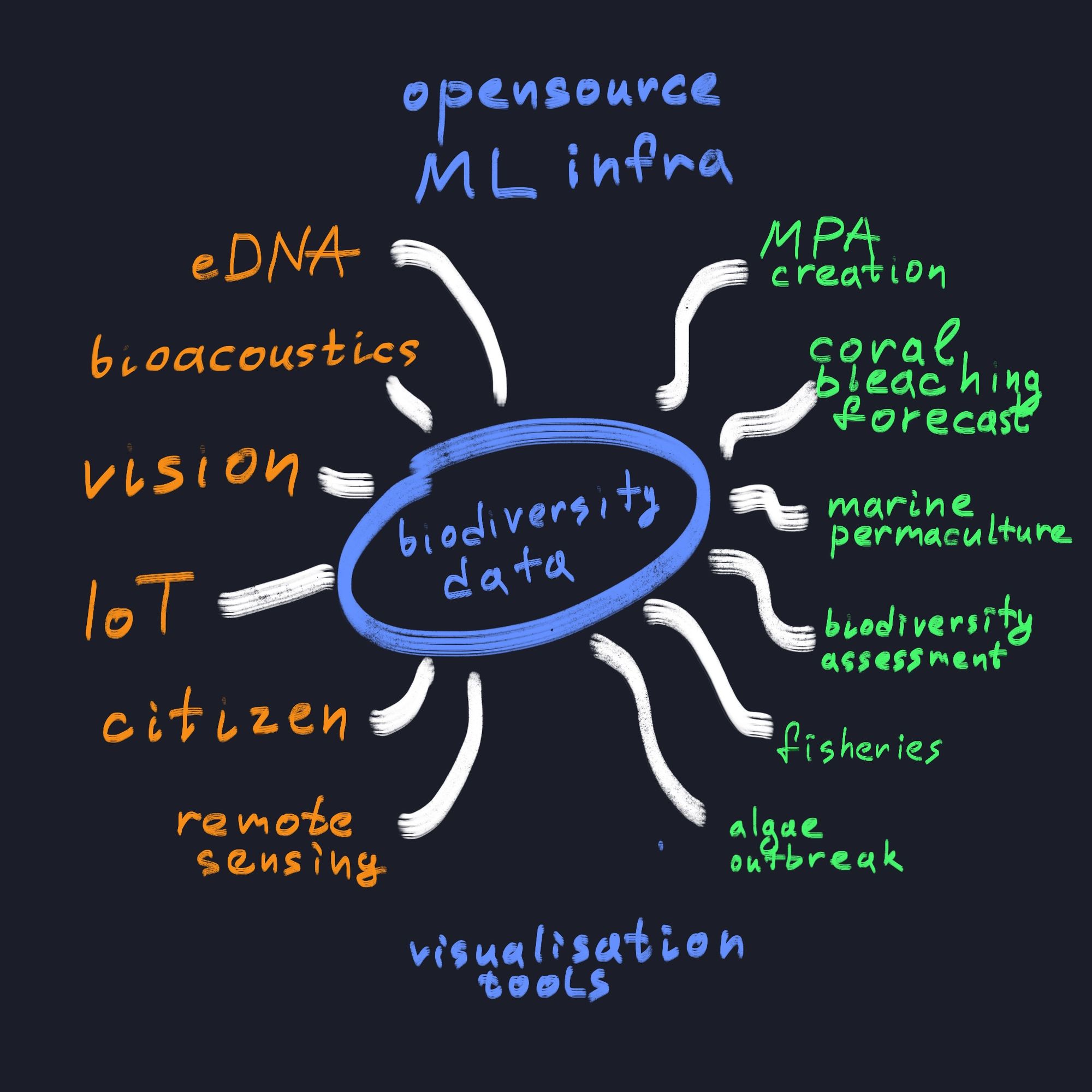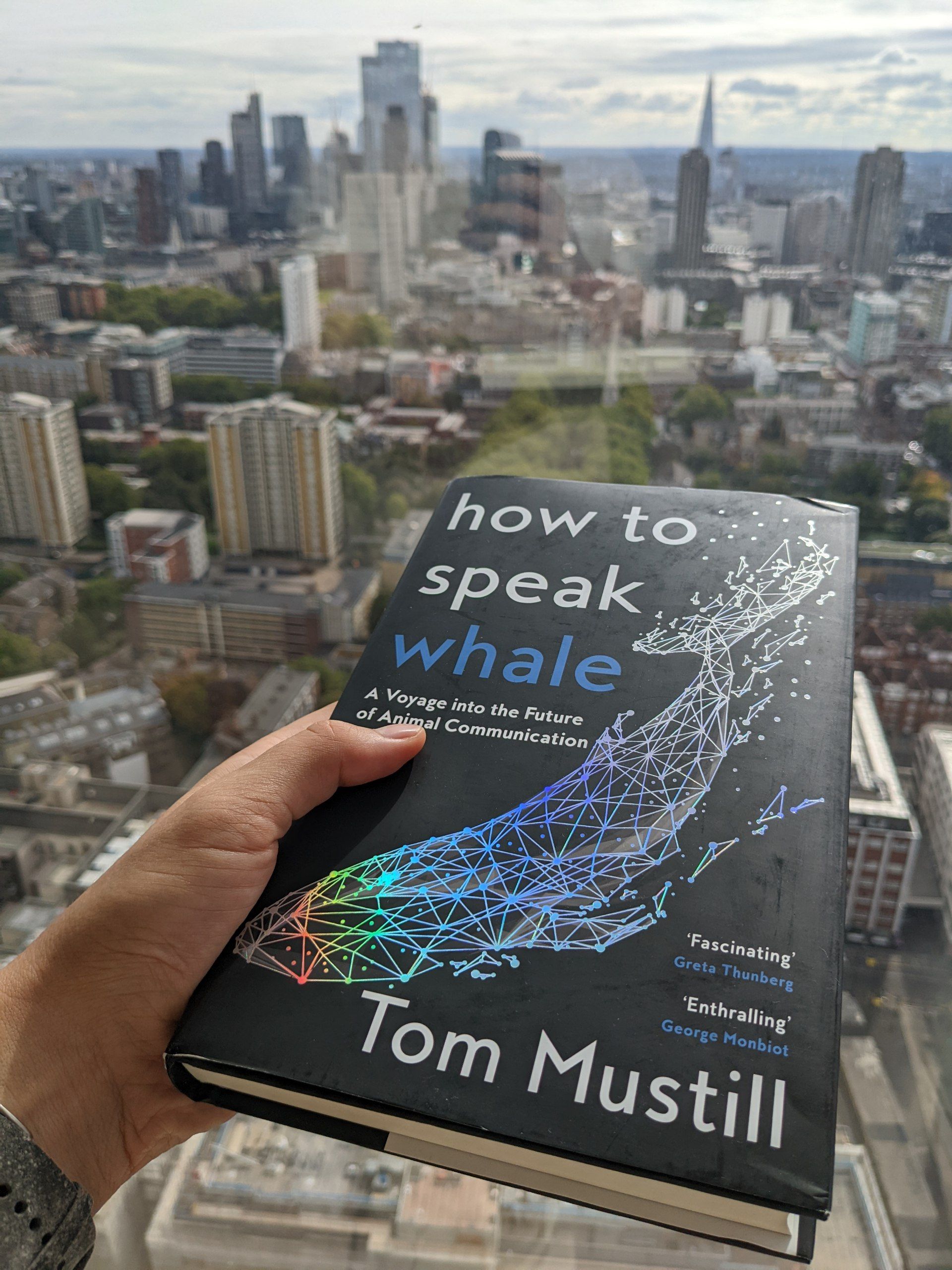It's already been two months since I left my job at Google X, and I'll be honest - it was a rocky start. The first month felt like wandering in the desert for 30 years, trying to piece together my scattered thoughts and figure out what I truly wanted from life.
I focused on building new routines, hit the gym, met fascinating people, and took the time to reflect. As the second month rolled around, the fog began to lift. Conversations with amazing people and exposure to incredible ideas brought clarity and direction. So, I thought I'd share my journey with you in this article.
Recharging: coral restoration opportunities
The ocean has become my sanctuary, a place I connect with through freediving and scuba diving. I set my sights on finding a unique experience where I could recharge, learn about ocean problems, and maybe even lay the groundwork for a startup or nonprofit.
Coral reefs are some of the most biodiverse ecosystems on our planet and support 25% of all marine life, coastal protection, and the livelihood of a billion people worldwide. Despite their significance, we've lost half of our reefs (since 1950) and are on track to lose 90% by 2050. This staggering loss would result in a $2.7 trillion annual hit to the global economy and a cascading ecosystem collapse.
Coral reefs store 68.14 to 88.14 megatons of carbon annually. Through a method called calcification, corals store carbon in their skeletons by mixing CO2 and calcium to create CaCo3 (limestone). Carbon sequestration capacity is 10x that of inland forests (by Blue Oasis Technology and Ocean Azul Foundation).
In the past decade, only $258M has been invested/donated in coral reef restoration across 56 countries (7x less than the previous decade). This is nothing! For comparison, just one Boeing 747 or Airbus A380 costs over $400M.
I learned all of that from Angeline Chen from Global Corralition (thanks Michael Geer). Their mission is to catalyse a global movement where creativity meets with scientific advances to accelerate marine ecosystem regeneration. To raise awareness and engage communities, they create awe-inspiring underwater sculptures that double as sites for education, ecotourism, and reef restoration.
In 2020, they built Atabey, Mother of the Waters, a sculpture based on Arawak/Taino culture (in the Dominican Republic). The project went viral, sparking local partnerships and helping to declare Sosua Bay a marine protected area. And a few weeks ago, they deployed Atabey in Sosua Bay.

The Ocean Agency has identified 50 reefs worldwide that, if restored, could reseed other regions over time. The Greater Antilles (E. Cuba, Dominican Republic & Haiti) is among these critical reefs. They also follow the Rebuilding marine life paper in their work.
I learned there're multiple methods to restore corals, e.g.:
- Micro-fragmentation - Breaking corals into tiny fragments to promote faster growth and fusion.
- Larval propagation: Coral larvae are collected or bred in laboratories and then settled onto artificial substrates or directly onto degraded reefs. Once the larvae metamorphose into juvenile corals, they can help repopulate and rebuild the reef structure.
- Utilizing low-voltage electrical currents to stimulate coral growth on artificial or damaged reefs.
Global Corralition is currently raising funds to build a self-sustaining coral restoration facility on land. Once they secure the necessary funds, I plan to volunteer, helping to build the facility and diving with the corals to learn more about ocean conservation. If you know anyone interested in sponsoring this project or investing in their team, please let me know!
I also keep in mind other fantastic projects to engage with: Indo Ocean Project, Reefscapers, Project Seagrass, Manta Trust, Pelagios Kakunja, Coralive, and Coral Gardeners. If you know more cool projects, please tell me!
Inspiration: mentoring students
Another great source of inspiration for me was becoming a mentor at Climate Entrepreneurs Club at Imperial. They have 20 teams with 100+ students in the current cohort.
I was lucky to become a mentor for the project Biofonic - they are developing an eco-acoustic sensor for monitoring soil health that enables the non-destructive quantification of biodiversity and other key metrics critical to sustainable agricultural land management. This is similar to what I was working on bioacoustics of the bees at Google, just focused on soil health. Super exciting! If you have experience with bioacoustics or soil health and are interested in talking to them, I would be happy to connect with you.
The accelerator is packed with tons of cool projects. These awesome teams are exploring all sorts of areas, from next-gen carbon capture to eco-friendly construction and clever waste management hacks. They're using the latest tech in computer vision, soundscape ecology, and geothermal energy to really shake up how we live on this planet. I can't wait to see what these bright minds come up with next!
This opportunity found me because I gave talks a few times at Imperial. I guess public speaking is a way to boost serendipity. It would be nice to double down on that.
Zoom-out: understanding the big picture
I'm 3 years in the climate tech/biodiversity space, but I feel like I'm still lacking a clear understanding of the most important issues to focus on and existing solutions. Everything is so entangled!
I would love to have something like that:
- dependencies graph between organisations - so I could try optimising it, e.g. removing loops etc.
- also incentives graph, as they are often broken, so that we could tune it.
- input/output in terms of data or materials (treating organisation like a function in programming), the value provided.
- a mind map of different areas (like this one about ML).
We could fix the incentives in some cases, we could get more funding for certain areas. I’m pretty sure there are interesting and important problems, but people simply may not know much about them. I was thinking of creating a list of startups/organisations in the space and trying to infer some understanding from it.
I started looking for databases of startups/organisations, for frameworks to analyse them, and for existing holistic overviews in climate/biodiversity/oceans.
Databases
I know Climatebase, Terra.do, ClimatEU.
Also, there are Conservation Tech Directory - a huge list of conservation tech organisations, 100 Companies to Leave Academia For - more around biodiversity, and Open Sustainable Technology - open source tools for a stable climate, energy supply, biodiversity and natural resources (and their report) – huge thanks to Eirini Malliaraki for sharing!
What are your favourite databases?
Frameworks
I know only Business Model Canvas. I also usually look at input/output (like in programming) and overall value.
There is also Gartner Magic quadrant framework - where you can build a dependency graph based on the company’s positions in the market like leaders, challengers, etc (thanks Anastasia Markina!).
Leverage Points: Places to Intervene in a System by Donella Meadows – fascinating classics (thanks Alex Novikov and Ekaterina Pantiukhova, for sharing!)
Technology readiness level (TRL) - estimating the maturity of technologies.
What's your favourite framework for understanding/categorising startups?
Overviews
Of course, UN IPCC AR6 Synthesis Report, UN Sustainable Development Goal (SDG) 14: Life Below Water could be a good starting point.
There’s also the TFND framework - an initiative aimed at providing a standardised, global approach to reporting and assessing nature-related financial risks and opportunities (kudos Aida Mashkouri for sharing!)
What high-level overviews could you recommend?
Conclusion
I realise that I need just to pick one problem and work on it. Because I don’t need to create every possible startup or find the most optimal one, I just need to create one. But still, I believe that having a big in-depth picture in mind is super important.
There are super interesting things (e.g. deep tech research), there’re businesses that could bring money (usually in a boring way), and there are important things to focus on (usually boring and don’t bring money), there are things you’re good at (you can acquire new skills or hire people). It’s so hard to find projects on the intersection of this Venn diagram. But I believe climate tech has plenty of opportunity, you just need to keep searching!
Meeting amazing people
So, I keep exploring! After the last post, so many of you replied with support messages and shared new opportunities. Thank you so much! The first couple of weeks after publishing were fully packed with coffee chats, calls or dinners. Meeting for coffee started to become my full-time job 🙂
I’ve met so many amazing people through Voyagers (organised by David Rowan’s team). Also, my friends (Arkadiy Serezh, Anna Gorbatcheva, Jerome Minney) kicked off the rolling climate tech get-together. It’s very cosy, usually around 10 people, feels like you’re visiting a family!
I learned about big data applications for vibrations of wind turbines from Tim Kohn. Shocking stuff that if you switch on and off a few million kettles simultaneously, you could shut down UK electrical grid - so it needs to be optimised since we’re moving towards renewables that can’t produce stable flow from Jerome Minney. How fascinating our microbiome is from Daniel Sozonov. How does adding good microbes to the soil make it healthy from Jesse Zondervan. My head is exploding now from so many cool ideas that I came across!
I teamed up with Filippo Varini to search for the next big thing related to ocean biodiversity since we are both passionate about oceans. He’s an MEng ML student at Imperial Colledge. He is the co-creator of the CDR tracking platform (cdr.fyi), running the climate pre-accelerator at Imperial, and worked on using eDNA + ML for marine biodiversity credits. He has great vibes, is super productive and wants to help the planet! So much easier to explore ideas when you have a good team!
My focus now: AI for marine biodiversity
So my search gradually started converging with the ideas of AI for biodiversity in the oceans.
I guess my strengths are big data and ML infra. I know that people in academia struggle a lot with big data (especially in ecology). I’m thinking of creating an open-source toolbox for scientists – providing them with modern ML infra and organising their large datasets along with geospatial data – to help marine conservation and accelerate research.
On top of that, we could run e.g. LLMs for biodiversity: train on historical data on coral reef health and use it to predict the likelihood of coral bleaching events in the future, or smth like that.
The high-level plan could be summarised as the following generic workflow – it was a helpful way of thinking about these things when I was at Google X:
- Biomonitoring/sensing solutions - basically get the data e.g. using eDNA, bioacoustics, using manual observations, or geospatial data, etc.
- Organise the data, derive insights with AI, provide visualisation tools, and make it accessible.
- Real-world applications - e.g. forecast coral bleaching, create marine protected areas (MPAs), calculate biodiversity indexes, predict harmful algae outbreaks, etc.

We started talking to many people (e.g. marine biologists) and seeing what their workflows and struggles are. I know they struggle a lot with the data. Also, I believe it’s better to start with researchers, engaging with academia and nonprofits, and focusing on open-source solutions first (because we need to solve climate asap). Would you recommend anyone to talk to?
I don’t know if the project is going to manifest itself as a startup or a nonprofit eventually.
Of course, it would be nice to leverage the market forces of capitalism and rely less on regulators. But it’s hard to find ways to protect biodiversity with the current system and create a thriving business that grows because it helps biodiversity.
I think we could get some small grants to support the project at the beginning. Once it becomes popular, maybe we could try creating premium custom features or provide a fully hosted solution. But I believe the core part must be open-source and developed by the community for the community.
Biomonitoring / Sensing solutions
Here’s the list of sensing solutions I came across that we might end up using.
1. Environmental DNA (eDNA)
Really cool and promising way of getting data about biodiversity. E.g. you’re salmon, you swam in the river, you dropped your DNA. Someone took a water sample and analysed it in the lab (similar to how we do PCR COVID tests). Then we know there was a salmon in that location (and we could know a time range too).
It used to be species-specific - you use a specific enzyme that reacts to a specific ribosome in a specific species. Another downside was it only captured presence/absence data, not abundance.
Now we have the new approach metabarcoding - basically, you get everything and then combine fragments and compare them to the reference genome. It also seems to help capture abundance information as well (quantitative eDNA). See paper in Nature.
We have a UK-based startup called Nature Metrics working on this.
2. Computer Vision
Using underwater camera systems is definitely a good way of getting the data. E.g. sea turtles recognition from DeepMind, X’s moonshot Tidal, NVIDIA has eReefs model.
UPD: "the state of public data is now at a point where we can train a general-purpose detector for BRUV-like marine video deployments, and we have good evidence that this would be both straightforward and useful." (Dan Morris) See amazing collections of datasets: marine fish, marine non-fish - drones, sonar, aerial and drone wildlife datasets (huge thanks to Dan for sharing!)
See also MOT dataset with nearly 100 video sequences of marine animals captured in the wild on Kaggle (thanks Malte Pedersen) and 250K fish images Awesome Fishies (thanks Levi Cai).
Check out FathomNet – open-source image database for understanding our ocean and its inhabitants.
Is anyone already working on a general fish detector?
3. Bioacoustics/soundscape
Not many underwater creatures have good vision. A lot of them rely on sounds. A friend of mine Mark Thomas is an expert on the bioacoustics of whales – he creates ML models to detect and classify marine mammals.
There’s an amazing book How to Speak Whale by Tom Mustill is a must-read on the topic!
There’s so much research in that area, e.g. “oyster larvae swim along gradients of sound”, i.e. marine soundscapes provide them navigational information (see paper) (thank you Aida Mashkouri for sharing!)
Soundscape data is one of the most important for ocean conservation. There’s a cool article about “resonant reefs: why closing your eyes might help you see the answer”.
“By avoiding our bias towards human perception, the researchers came up with a novel solution. They demonstrated that broadcasting healthy sounds of a coral reef can lure fish back to a degraded reef and help revive its ecosystem.”
I’m planning to read The Sounds of Life by Karen Bakker, and An Immense World by Ed Yong (kudos Aida!).
Btw, if you haven’t heard, there’s a pretty cool Merlin Bird ID mobile app (“Shazam for birds”) by the Cornell Lab of Ornithology.
4. Manual surveys & citizen science
There’re amazing citizen science projects like Happywhale. You can upload your picture of a whale, or a whale’s tail. On the backend, AI would help recognise this animal. You can track whales globally this way! This is so cool! (from the amazing How to Speak Whale book by Tom Mustill!) There’s also Reef Census and many others.

5. Robotics and IoT
There’re interesting IoT solutions like ReefOS and Aqualink (thanks Drew Gray for creating!)
Planblue – creates underwater satellites – they use “hyperspectral imaging, precise underwater navigation and A.I. to create augmented maps” providing “carbon sequestration estimations without extensive sampling” (by Joost den Haan).
Aquaai – fish-as-a-Service.
6. Remote sensing / geospatial data
7. Others
- EKG/ECG for plants vivient.ch – they attach IoT devices to plants and measure electrical signals to see if the plants are under stress. Could we apply this tech underwater?
- Biosensors? Could we leverage living things?
- Smell? Any signalling chemicals?
Potential real-world applications
We’re looking at what could be done once you have the data.
1. Creation of marine protected areas (MPAs)
James Ketchum shared many details on how the creation of MPAs works. There’s a lot of back-forth with the governments. But he believes that good software could definitely speed up the process significantly.
We hope that after UN High Seas Treaty (protecting 30% of the world's oceans by 2030), we will see more MPAs created (fingers crossed!)
Also, we want to protect some areas, but megafauna is not static, it moves. We need to analyse movescape data. E.g. Movescape animals article – characterizing the landscape of movement to identify critical wildlife habitats and corridors. Megamove – a super cool project where big-data approaches lead to an increased understanding of the ecology of animal movement (thank you Aida Mashkouri for sharing!)
2. Harmful algae outbreak prediction
3. Forecasting of coral bleaching
We could train ML models on historical data on coral reef health and use it to predict the likelihood of coral bleaching events in the future. Last year Cognite and HUB Ocean organised a hackathon with the NOAA-data (thanks Jo Øvstaas for sharing!).
4. Marine permaculture & regenerative aquaculture
There is also this concept of marine permaculture. Basically, you grow kelp forests in the oceans, this becomes a habitat for fish. You can fish in the area and sync carbon from the atmosphere. One big problem with all of this might be the lack of understanding. E.g. how much carbon are we actually drawing down? For how long? How many fish are we attracting? How much are we cleaning? Where should we put these areas to benefit better? (thanks Filippo for sharing all of this!)
E.g. Green Ocean Seaweed Farming - small-scale ocean farms that practice multitrophic aquaculture can provide sustainable food and biofuel, clean up the environment, and reverse climate change.
5. Marine Biodiversity Assessment
The agreement reached on the COP15 included the requirement that we need to ensure that businesses monitor and report their dependency and impacts on nature. How do you know that our investment is benefiting biodiversity? It seems we need smth analogues of Measurement, Reporting, and Verification (MRV) for biodiversity.
There’s an interesting "Nature Data Catalog" (G4N). We could calculate biodiversity indexes too e.g. the Ocean Health Index, Reef Check, Marine Biodiversity Assessment and Monitoring Program etc (thanks Jo Øvstaas for sharing!)
6. Fisheries
There could be a ton of use cases when it comes to fisheries. Global Fishing Watch is doing ground-breaking work on analysing big data about human activity at sea. JT Mudge has a lot of great resources about fisheries!
Yay, so many things could be done! We could play sea soundscapes to regrow reefs.
So if you have any ideas about:
- applications
- interesting sensing solutions
- important databases/datasets (e.g. Ocean Database, World Ocean Atlas, OBIS, IBAT, Deep Sea Corals Kaggle etc.)
- good resources to read/listen – I’m planning to read “Rewilding Oceans” (thanks Filippo) and “Outlaw Oceans” (thanks Tom Mills)
- communities (like Ocean Data slack) or conferences
- people to talk to
please let me know, it would mean the world to me!
Conclusion
There’s definitely life after Google! It could be scary to leave, you feel like you’re screwing up your career. But I feel this change was needed for me, I’m learning a lot now.
Also, sometimes you feel like you're closing important doors, but it's an illusion (if you’re doing things right) – I’m still in touch and in good relationships with many people. And there are a lot of opportunities.
- One of the top-tier early-stage VC funds is offering to join them as an investor (because of my tech background). Increasing the surface of interactions with the real world sounds pretty cool! You can be on board many startups and go to a lot of interesting events, and they would pay you even more than Google does. I did some angel investing but didn’t consider the VC path seriously yet. I’m not sure if this is the way for me now because I could do that later as well. But that could be fun! (sharing this because it could be unknown unknown path for someone)
- I guess I should find good startup or nonprofit entrepreneurship mentors for myself. It would be good to assemble a list of people you admire and reach out to them!
- Another good option is to join some startup program. There’re startup accelerators and venture builders, or you can become an entrepreneur in residence at some VC fund. E.g.: Entrepreneur First, ZINC, Carbon 13, Bright Tide and many others.
- I enjoy sharing stories (my motivation). I was thinking about it in terms of “documenting your journey” or being a “technical investigator” (kind of writing a design doc). Recently I came across “data storytelling” (thanks JT Mudge for inspiring me) – this is pretty cool, you can analyse a lot of data (which I do anyways) and then make stories that change the world based on that! I want to make this part of my identity now.
Since I have a bit more time now. I signed up for the 6 weeks bootcamp with YesTheory. Planning to kick off a mini YouTube channel shortly. Let’s see how it goes. I’m super excited!
If you’re at a crossroads moment in your life, listen to your heart and don’t worry about trying something new! I think long-term regret minimisation is the key.
Please help me improve my writing 🙏


